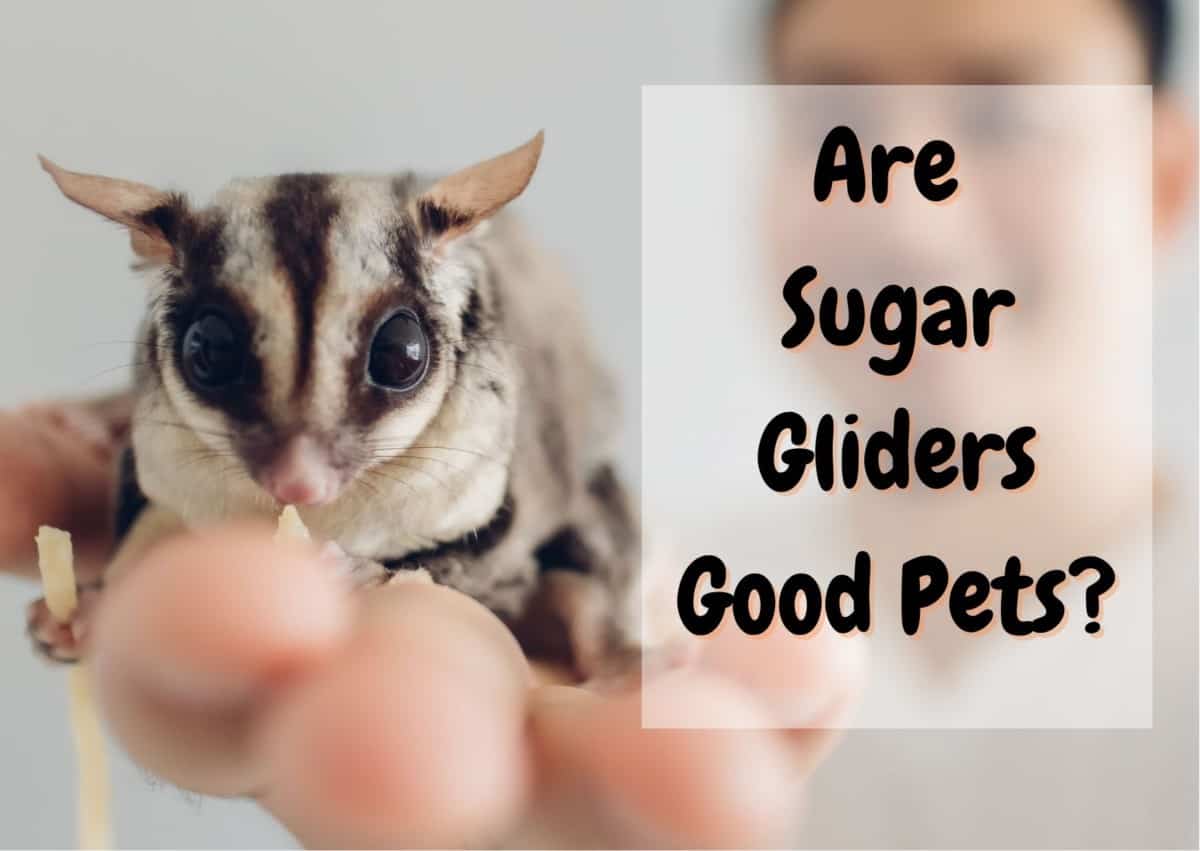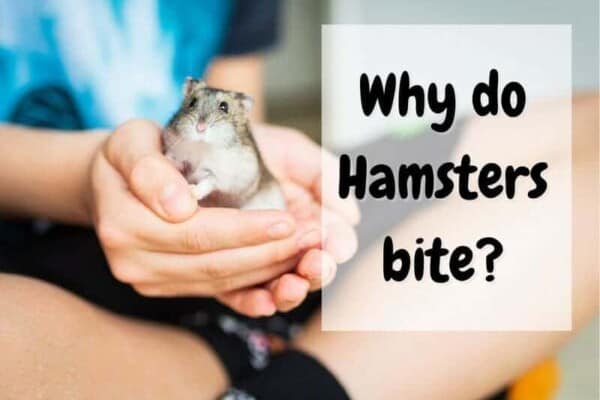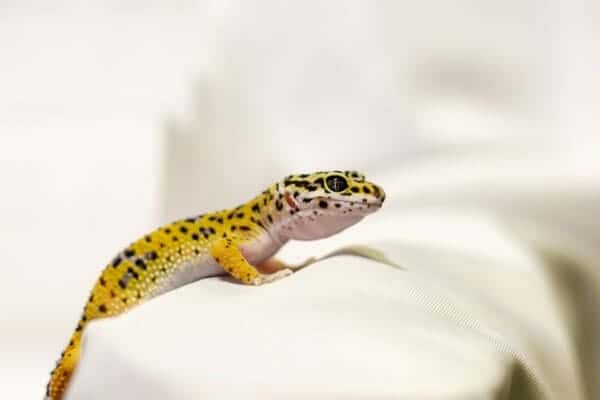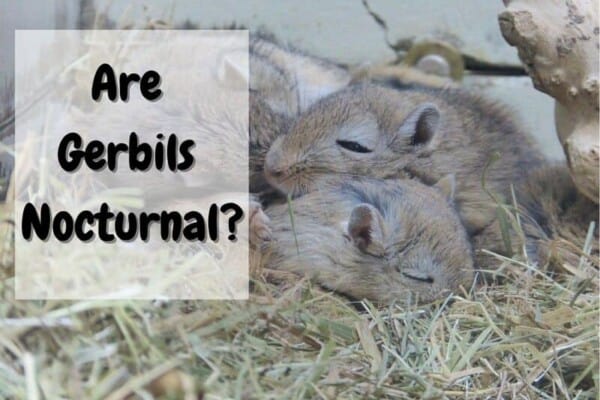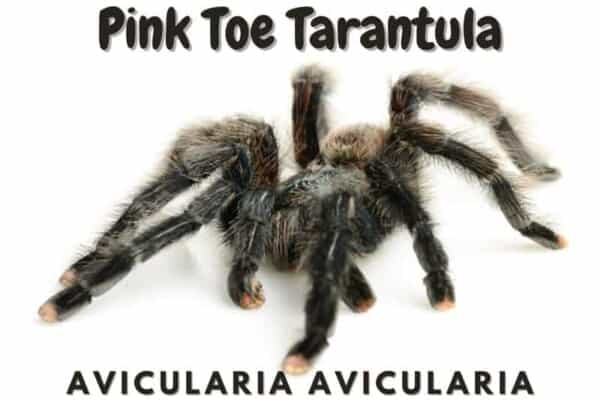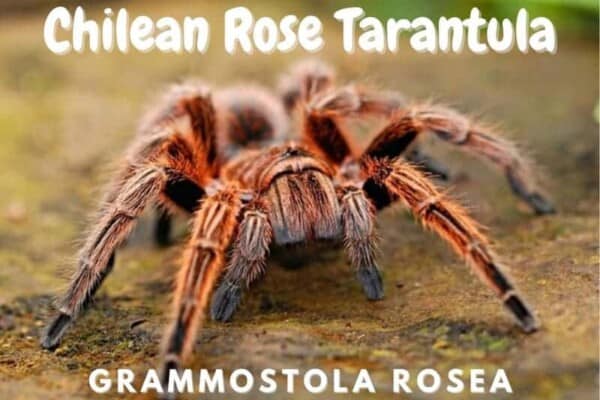Are sugar gliders good pets? This is a tricky question. Thousands own sugar gliders around the globe. The true question is, are you the right owner? There are a few things you should definitely know about these critters before you decide to adopt one.
Do sugar gliders make good pets? These critters are high-maintenance, so if you are not used to exotic animals or have experience with dogs or cats only, brace for a steep change of routine. Adapting to their food diet, habitat, noises, and need for companionship are a few things you need to carefully consider.
However, adaptation to your pet’s habits is a normal part of owning any other exotic pet. In this article, you will learn what it means to care for a sugar glider so you can make an informed decision about keeping one as a pet or not.
Are sugar gliders good pets?
Sugar gliders make great pets when owners take the time to understand the needs of these playful marsupials.
As a matter of fact, gliders are not low-maintenance pets, such as gerbils or hamsters. As with a dog or cat, your sugar glider needs attention and stimulation.
Unfortunately, too many people think only about the cute, cuddly appearance of the little animals and not the demands of properly caring for one or more. This results in more people needing to give up their gliders and more premature deaths from improper care. Some of the issues that people tend to overlook include:
- Setting up a suitable habitat
- Planning a strict food diet
- Dealing with odors
- Noises during the night
- Bonding with the animal
- Keeping more than one glider
1. Sugar Gliders Require a Suitable Habitat

Sugar gliders are not like gerbils that you can put in a cage, add food and water, and leave alone. You need to take the time to set up a cage. Large wire cages provide the perfect environment for sugar gliders. As active creatures, they need room to climb and jump, but they shouldn’t have the freedom to wander around your house unattended.
If you have one or two sugar gliders, the cage should measure at least 24 x 24 inches wide and deep and 36 inches tall. If possible, purchase a cage that is even taller, providing more room for your pet to glide from one toy to the next. The best sugar glider cages are not always cheap, but they are essential for the well-being of your critter.
What type of accessories will you need?
Try to find a cage that includes shelves or perches, such as the cages typically made for birds. No matter what type of cage you choose, ensure that it doesn’t provide any spots for escape. Due to their active nature, if the cage provides a way to escape, your sugar glider will likely find it.
The other items that you need to put inside the cage include bedding, nest pouches, and toys, as well as food and water dishes.
Many sugar glider owners place water bottles in the cages. Over time, a sugar glider may eventually learn to drink from the bottle, but younger ones may find it difficult. When you first bring a glider home, ensure that you have a water dish, even if you decide to use a water bottle.
For bedding, you may use newspapers, wood shavings, or cage liners. For pouches, look for specially-made sugar glider nest pouches. The fleece or cloth pouches offer a soft spot for your gliders to cuddle and keep each other warm.
Why sugar glider toys are important
Sugar gliders also need toys for stimulation. Even if you spend a lot of time bonding with your sugar glider, it still needs stimulation when you are busy or not at home. As with dogs or cats, your glider may suffer from boredom, depression, and anxiety when left unstimulated.
When purchasing toys for the sugar glider cage, avoid adding too many. You still want to leave plenty of room for your sugar glider to jump and leap from object to object.
Before adding a toy, you also need to ensure that it doesn’t provide a choking hazard. Carefully inspect the toy for the following dangers:
- Pieces that may untie or easily tear off
- Toys containing toxic materials
- Pieces that may get unraveled
- Spaces where gliders may get stuck
Also, keep in mind that the toys you select need regular washing. Some objects, such as real wood, are difficult to clean or may become soggy or damaged when washed.
2. Sugar Gliders Require A Strict Diet
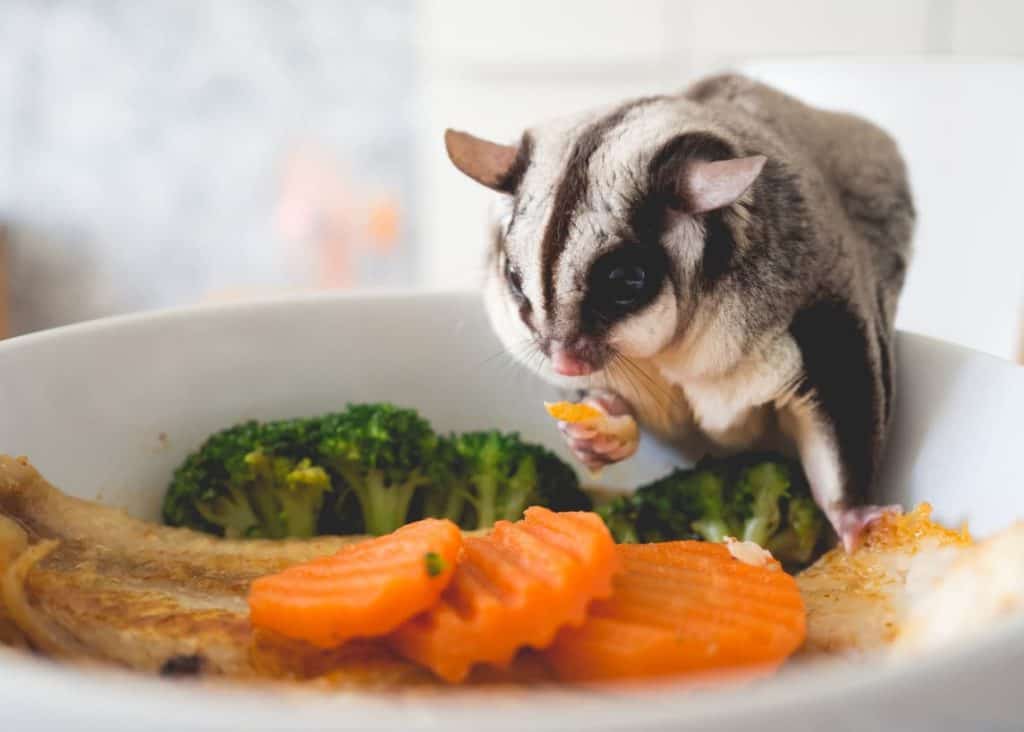
You need to give your glider a strict diet, which requires planning and preparation. Lack of nutrition is a leading cause of health problems for sugar gliders. Calcium deficiencies and obesity are two of the most common health issues.
Sugar gliders are omnivores and eat almost anything available. In the wild, they like to suck the sweet sap from trees, resulting in the name of these small animals.
Besides tree sap, sugar gliders enjoy other sweet foods, including fruit and live insects. However, in captivity, it’s up to pet owners to ensure that the gliders continue to get a balanced diet containing a mixture of foods, such as:
- Fruits
- Vegetables
- Protein
- Live insects
- Commercial sugar glider food
There are also foods that you need to avoid, including chocolate and most dairy products. However, some people feed their sugar gliders small amounts of yogurt or cheese, as these foods contain protein.
What is a balanced sugar glider diet?
About one-quarter of your glider’s diet should include a mixture of fruits and vegetables. Bananas, apples, grapes, oranges, pears, melons, and kiwi fruit are popular fruits. For vegetables, consider giving your glider carrots, broccoli, sprouts, or squash.
Protein sources include poultry and live insects. Unfortunately, these foods lack calcium, which may lead to issues with your glider’s teeth and bones. To prevent a calcium deficiency, you may give your gliders live insects that are gut-loaded with calcium supplements.
Raising your own insects also helps reduce the cost of buying food for your gliders. Insects such as crickets are easy to keep and provide them with a continuous source of protein.
What about treats?
Sugar gliders love snacks, but you should only give special treats in moderation to reduce the risk of obesity. These small animals often only weigh about four ounces when fully grown. Giving your pet fatty foods, such as too many live insects, adds unnecessary fat to its diet.
Common sugar glider treats or snacks include:
- Dried fruit
- Yogurt drops
- Live insects
Dried fruits are cost-effective treats and provide beneficial nutrients. If possible, purchase fresh fruit and use a food dehydrator or your oven to dehydrate the ingredients.
Yogurt drops are freeze-dried pieces of yogurt. To make these drops, you just need yogurt, a baking sheet, and parchment paper. It also helps to use a cake decorating bag for squeezing the drops onto the baking sheet.
Simply prepare the baking sheet and use a cake icing bag or a spoon to place dots or drops of yogurt on the parchment paper. Place the sheet in the freezer for at least two hours or overnight. After freezing, you have small bite-sized treats that you can place in your glider’s food dish.
Just make sure that you don’t feed your pet too many treats. Obesity is a risk, and gliders prefer sweet snacks. If you provide a never-ending bowl of dried fruit, it may fill up with the sweet stuff without eating its regular food.
3. Sugar Gliders Often Smell
Odors may also become a problem if you don’t follow a specific cleaning routine. If you clean the entire cage and everything in it, unneutered males may remark everything with their scent. Instead of cleaning everything at once, clean different parts of the cage on different days.
Unpleasant odors may also occur due to the diet. If a glider eats too much protein, it may develop a stronger smell. In fact, pee and feces also smell but are not overly powerful.
While you can’t truly potty train sugar gliders, they rarely relieve themselves freely around the house. Just make sure you leave them in the cage after feeding until they urinate or poo.
4. Sugar Gliders Can Be Noisy
As nocturnal animals, sugar gliders are often up through the night making various noises. Some people overlook this issue, resulting in sleepless nights. The best option is to place the sugar glider cage in a room where the noise won’t cause too much of a distraction.
Despite these demands, gliders don’t require too much care compared to a cat or dog. They need a clean environment, a balanced diet, and socialization.
5. Sugar Gliders Require Bonding Time
Bonding is necessary, especially if you’re only keeping one sugar glider. Before bringing one of these pets to your home, learn more about the sugar glider bonding process and how to tell if your glider has bonded with you.
At first, your sugar bear may act scared when you try to hold it. In some cases, sugar bears bite or nip. Luckily, the bites rarely break the skin, as these pets are so small.
During the first couple of days, you may just want to leave your sugar glider in its cage, giving it time to familiarize itself with its new home. This helps reduce the stress of the transition.
Over time, your gliders will come to recognize your scent. They will freely walk on your arm, climb around your neck, and even nuzzle with you. When they get completely comfortable, you’ll hear the cutest little chirping sound, making all the hard work worth the effort.
Using a pouch to bond properly
Carrying pouches allow you to carry the sugar glider around with you as you go about your morning. As these little animals tend to sleep during the day, they will likely spend most of the time sleeping inside the pouch.
You can keep the glider inside the pouch for up to 10 hours but should take it out occasionally to stretch its legs. The pouch helps keep the glider comfortable and relaxed, while also exposing it to your scent. Be patient and your sugar glider will eventually warm up to you. It typically takes about four to six weeks for a sugar glider to bond.
6. Sugar gliders need companionship
Sugar gliders are social creatures that live together in groups of six to twelve in the wild. In captivity, lone gliders may become bored, restless, and depressed.
If you want the best for your pets, you should keep at least two sugar gliders together. You can add sugar gliders to a cage that already has one or more sugar gliders. You can also purchase gliders separately and bring them home together.
While interacting with a human offers some companionship, these little animals thrive when they can spend more time with others of their own kind. When purchasing multiple gliders, avoid placing multiple males in a cage with one female. While gliders rarely fight, they can fight for dominance.
Most vets and experienced glider owners recommend pairing two males or two females. You may also pair one male and one female.
If you already have one glider in its cage, consider using a separate cage for the second glider. Place the cages next to each other so that they can slowly become more familiar. When they become comfortable around each other, you can start housing them in the same cage.
Are Sugar Gliders Expensive?
Baby sugar gliders cost between $200 and $500. You also need to purchase a suitable habitat, bedding, and food. After the initial costs, owning a sugar glider is not expensive. The main ongoing expenses include food and potential vet visits if your glider gets sick.
What Are Common Illnesses for Sugar Gliders?
Although sugar gliders are not high-maintenance animals, they may occasionally require a trip to the vet. In fact, most owners and vets recommend that you at least take your pet in for an annual exam.
Other than the exams, you may only need to take your sugar glider to the vet if it experiences an illness or injury. The most common medical issues in sugar gliders include:
- Accidents
- Dehydration
- Bacterial infections
- Parasites
- Giardia
- Pesticide poisoning
- Hind leg paralysis
- Respiratory infections
- Nutritional dystrophy
- Stress
Accidents
Accidents are the most common medical problem that sugar gliders face. Broken bones and injuries may occur when a glider attempts to leap from an object during unsupervised playtime.
Many sugar glider owners have dealt with the sad experience of finding their pets drowned in the toilet. If you allow your glider to leap around the house, ensure that the toilet lid remains closed. You should also ensure that there are no other open sources of water, such as a fish tank with a large opening.
Dehydration
Dehydration is a sign of illness. However, a lack of water also leads to dehydration. If your glider’s skin seems less elastic, dehydration is likely the cause. Ensure that the water dish or bottle remains full. If you only have a water bottle, try adding a water dish, since some gliders find it difficult to drink from the bottle.
Many of the other common medical issues occur due to poor nutrition, tainted food, or unsanitary environments.
Pesticide poisoning
To prevent pesticide poisoning, always thoroughly wash fruits and vegetables before serving or preparing them as a snack. You should also regularly clean out the cage and wash fecal matter from nest pouches or toys.
Hind leg paralysis often occurs due to a calcium deficiency. If the hindquarters appear weaker than normal, try to increase calcium consumption with a supplement. Live insects fed calcium supplements provide a boost of calcium.
Stress
Stress can become deadly for sugar gliders. These creatures don’t cope well with anxiety and unnecessary stress. You may notice that your glider is losing hair, biting its tail, circling its cage, or even self-mutilating.
If you notice these signs, try to spend more time bonding with your glider. It may also need more stimulation or another companion.
How Do You Find Sugar Gliders for Sale?
There are many places to buy gliders. You can find them at small pet stores or buy them from individual breeders. Unfortunately, some breeders only breed gliders for the money. Before purchasing a sugar glider from a breeder, research the following:
- The quality of the facilities
- The age that they separate the joeys
- The lineage of the gliders
- The health of the glider
If possible, learn more about the facilities. It helps to physically travel to the location and see how the breeder houses the gliders. Dirty, unsanitary conditions may indicate that you are dealing with a breeding mill.
You should also question the breeder to determine his or her knowledge about the animals, including at what age they separate the joeys. Sugar gliders should not leave their mothers before eight weeks, with some breeders not selling joeys until they reach 12 weeks. If the breeder agrees to sell the glider earlier, he or she may not care about the health of the creature.
Always Check the Sugar Glider Lineage
One of the most important details to research is the lineage of the gliders. Inbreeding leads to deformities and health issues. It’s also a common problem at breeding mills. Respectable breeders maintain detailed records of the lineage, providing proof that the gliders come from separate lines.
The final step is to inspect the health of the glider. Look at the coat. The glider should have soft, fluffy fur. It should also be alert and curious instead of shying away from your hand.
If you take the time to perform this research, you should have no problem finding a suitable sugar glider breeder.
Do sugar gliders pee and poop everywhere?
Sugar gliders are clean animals and rarely go to the bathroom where they eat or sleep, often choosing a spot in the corner of their cage. Leave them in their cage for about 15 minutes after eating or sleeping to reduce the chance of accidents outside the cage.
Are sugar gliders dangerous?
Sugar gliders may bite or nip when threatened or when handled by people other than their owners. However, the bites rarely hurt or break the skin. Bonded gliders recognize their owners. After bonding, biting is almost unheard of, unless you startled the glider.
Are sugar gliders illegal?
Sugar gliders are illegal to own or breed in California, Hawaii, Alaska, and New York City. In Pennsylvania and Massachusetts, you need to obtain a special permit. Additionally, some cities or counties may have their own legislation prohibiting these animals. Always check local laws before buying gliders.
- Sugar glider VS flying squirrel – which one is the best pet?
- Sugar Gliders VS 7 exotic pets – what is the best pet for you
Resources and further reading:
- Routine Health Care of Sugar Gliders, Rosemary J. Booth
- Husbandry Manual For Squirrel Glider Petaurus norfolcensis, nswfmpa.org
Contents
- Are sugar gliders good pets?
- 1. Sugar Gliders Require a Suitable Habitat
- 2. Sugar Gliders Require A Strict Diet
- 3. Sugar Gliders Often Smell
- 4. Sugar Gliders Can Be Noisy
- 5. Sugar Gliders Require Bonding Time
- 6. Sugar gliders need companionship
- Do sugar gliders pee and poop everywhere?
- Are sugar gliders dangerous?
- Are sugar gliders illegal?

